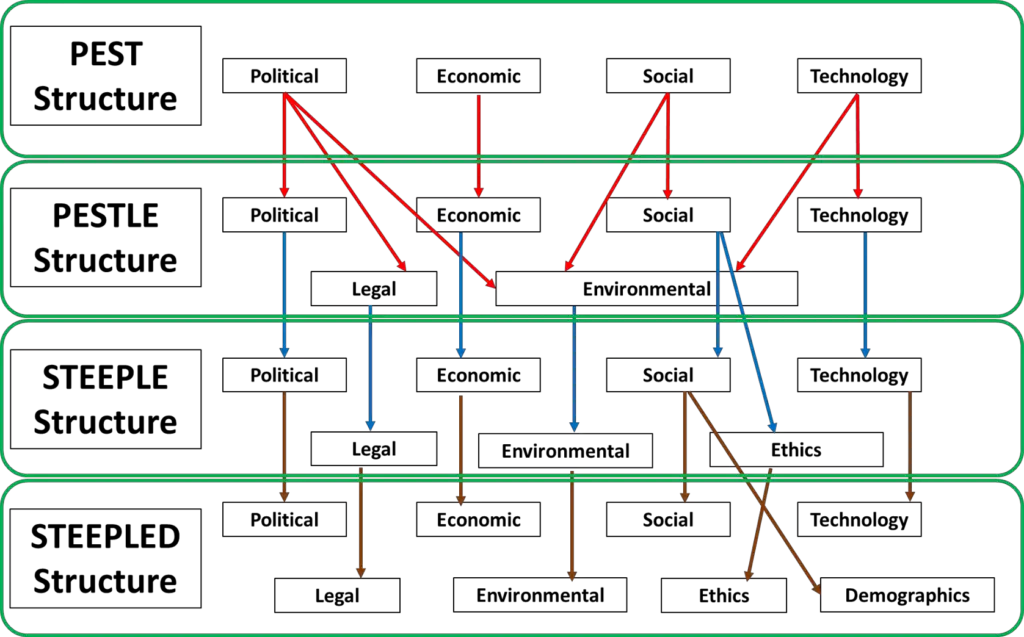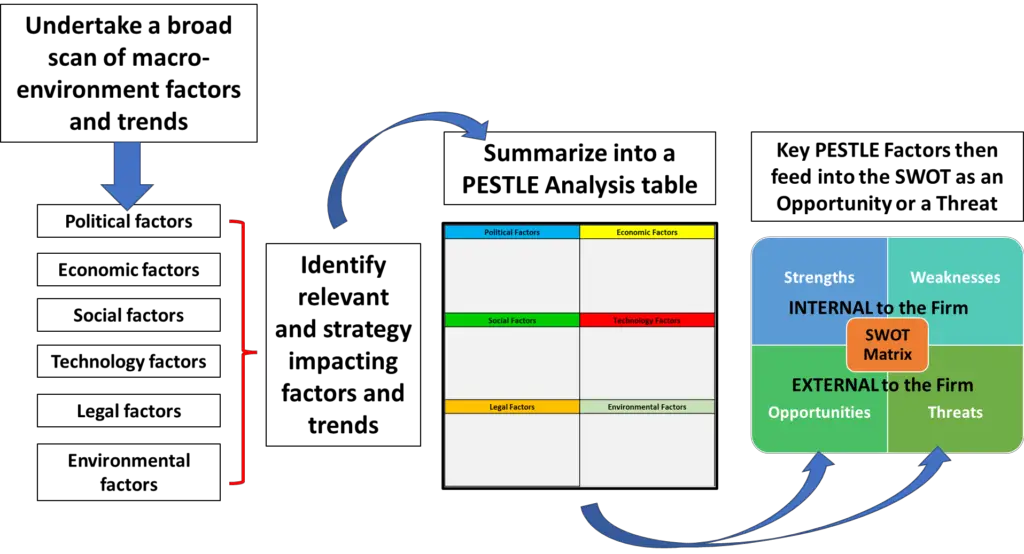What Does PESTLE Stand For?
The letters of PESTLE represent the broad categories of a macro-environmental scan for marketing purposes. The letters stand for:
- P = Political factors
- E = Economic factors
- S = Social factors
- T = Technology factors
- L = Legal factors
- E= Environment factors
PESTLE often uses slightly different letters (structures). Often it is structured as PEST only, and sometimes it is extended to STEEPLE – where the extra E letter stands for Ethics (or what is becoming more commonly known as corporate social responsibility.
And another variation is STEEPLED – where the D stands for demographics, which is normally include under Social factors.
It is important to note that the variations of PESTLE are essentially the same and you should simply use the structure that best fits your firm.
The following diagram demonstrates how the variations of PESTLE are interrelated:
What is the Purpose of PESTLE Analysis?
PESTLE is a summary of the macro-environmental scan. As you may know, marketers need to understand and consider the impacts of the overall marketing environment when they are setting their marketing strategy and designing their marketing mix.
The marketing environment – where the firm operates – consists of two broad components, namely:
- Their micro-environment, and
- Their macro-environment
In simple terms, their micro-environment consists of: their firm itself (sometimes referred to as the internal environment), their channel partners and suppliers, their customers and target markets, their direct and indirect competitors, their bankers, advisers and consultants, plus relevant media and lobby groups.
In other words, their micro-environment primarily impacts them, their competitors and their local industry.
Whereas their macro-environment is much broader (see list of factors above) and impacts most/all industries and firms in the country, and perhaps even globally.
Our goal of PESTLE analysis is to broadly scan the macro-environment to identify key factors and trends which are:
- relevant to our firm or industry
- significant enough to impact our business performance, and
- likely to enhance or limit our ability to implement our marketing strategy
From a detailed environmental scan, we then compile a summary list of relevant and impactful factors and place them into the PESTLE structure.
And then from there, we select the most significant ones for inclusion in our SWOT analysis – either as an Opportunity or a Threat – depending upon whether the factor (trend or change) is likely to be beneficial or detrimental to our firm’s performance or proposed strategy direction.
This overall relationship is demonstrated in the following model:
Related Articles
- Free PESTLE Analysis Template
- Introduction to PESTLE
- List of 400 Factors for PESTLE Analysis
- List of Political Factors for PESTLE
- List of Economic Factors for PESTLE
- List of Social Factors for PESTLE
- List of Technology Factors for PESTLE
- List of Legal Factors for PESTLE
- Understanding and Using SWOT Analysis
- Free SWOT Maker (Using Excel)


